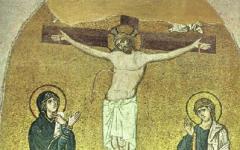Для русского человека, эти четыре глагола сложны для понимания, т.к. они близки по смыслу, но употребляются в различных ситуациях и нередко вносят путаницу в голову изучающих английский язык. Давайте попробуем искоренить этот пробел…
To tell — рассказывать, говорить
To talk — разговаривать, беседовать
To say — сказать, говорить, произносить
To speak — разговаривать, говорить
Inveraray Castle фотограф: Norm Robbie
Глагол «TO TELL» (говорить, рассказывать)
1. Глагол «to tell» всегда употребляется при большом объёме сказанного. Это могут быть истории, повествования о чём-то и т.д…
a) Может быть употреблён с косвенным дополнением, которое непосредственно указывает на лицо, к которому обращена речь
My friends told him about the journey- Мои друзья рассказали ему о поездке.
Yesterday John told me an exciting story - Вчера Джон рассказал мне захватывающую историю.
b) Может быть употреблён с прямым дополнением. Например, с отдельным словом или сочетанием
John told me his address - Джон сказал мне свой адрес (отдельное слово).
His mum told me when to call - Его мама сказала мне когда позвонить (сочетание слов).
2. Это необходимо заучить! Также глагол «to tell» всегда нужно применять в следующих выражениях:
to tell the truth - сказать правду
to tell a lie - сказать неправду
to tell a story – повествовать, рассказывать историю
3. Внимание! При переводе, значение глагола «to tell» будет меняться, если после косвенного дополнения у нас стоит инфинитив. В этом случае предложение будем переводить в значении велеть, приказывать.
Boss told me to book the tickets. – Босс велел мне заказать билеты.
Глагол «TO TALK» (разговаривать, беседовать с кем-либо)
Глаголы «to talk» и «to speak» очень похожи по смыслу и практически обозначают одно и тоже. Различие только в том, что «to talk», как правило, употребляется в разговорной речи, а «to speak» — больше при официальном общении, публичных выступлениях.
Has David talked to them in the morning? - Дэвид разговаривал с ними утром?
We talked for hours. — Мы разговаривали часами.
Глагол «TO SAY» (сказать, говорить, произносить)
1. Глагол «to say» употребляется, если объём произнесённой речи небольшой. Чаще всего для передачи чужой речи, а особенно, в различных диалогах.
They said, ‘We have been in Italy’ - Они сказали: «Мы были в Италии»
He said, ‘When have you been in Italy ?’ - Он сказал: «Когда вы были в Италии?”
2. Также, глагол «say» употребляется перед словами «word, name, sentence».
She didn’t say his name - Она не сказала его имя.
I didn’t say a word. — Я не сказал ни слова/ ничего не сказал.
3. При указании конкретного лица, кому вы что-то хотите сказать, после глагола «say» употребляется предлог «to».
She said hello to you - Она передала тебе привет.
Глагол «TO SPEAK» (разговаривать, говорить)
1. Вести с кем-то беседу, разговаривать, т.е. в беседе всегда есть партнёр.
Has he spoken to Joe today? – Он сегодня разговаривал с Джо?
2. В ситуациях, когда человек выступает с докладом, делает презентацию или проводит конференцию. Тоже самое, если приходится выступать на собраниях или читать лекции. Чтобы легче запомнить, представьте себе трибуну. Всё, что связано с выступлениями с трибуны – употребляем с «to speak»
Vincent Van Gogh was born in Holland in 1853.
Before becoming a painter he was a teacher.
He started painting when he was twenty-seven. In 1886 he left Holland and joined his young brother Theo, who lived in Paris.
Here he painted some of his most famous pictures.
After living there for two years he moved to the South of France, because the climate was warmer there.
But Van Gogh was mentally ill. During one of his fits of madness he attacked his friend, the artist Paul Gaugin.
In another fit of madness, he cut off part of his own ear. Eventually he went into a mental hospital but he didn"t get any better.
Finally, on Sunday 27th July 1890, in the small village Vincent Van Gogh took a gun. He .went into a cornfield and shot himself. Thirty-six hours later Van Gogh died in his brother"s arms.
His last words were: «I hope I did it properly». Nobody has ever painted cornfields or sunflowers like Van Gogh. His paintings are full of colour and sunlight.
Today his paintings are worth millions of pounds but in his lifetime he only sold one.
Перевод текста: Vincent Van Gogh - Винсент Ван Гог
Винсент Ван Гог родился в Голландии в 1853 году.
Перед тем как стать художником, он бы учителем.
Он начал рисовать в возрасте 27 лет. В 1886 году он уехал из Голландии и присоединился к своему брату Тео, который жил в Париже.
Здесь были нарисованы некоторые из лучших его картин.
Прожив здесь два года, он переехал в южную Францию, потому что климат здесь был теплее.
Но Ван Гог был душевнобольным. Во время одного из приступов сумасшествия он напал на друга, художника Поля Гогена.
Во время другого приступа он отрезал себе часть уха. В конце концов он попал в больницу для душевнобольных, но состояние его не улучшилось.
В итоге 27 июля 1890 года в маленькой деревне Винсент Ван Гог взял ружье, вышел в кукурузное поле и застрелился. 36 часов спустя Ван Гог умер у брата на руках.
Его последние слова были: «Я надеюсь, что сделал правильно». Никто не рисовал так кукурузные поля и подсолнухи, как Ван Гог. Его картины полны красок и солнечного света.
Сегодня его картины стоят миллионы фунтов, но при жизни он продал лишь одну.
Использованная литература:
1. 100 тем английского устного (Каверина В., Бойко В., Жидких Н.) 2002
2. Английский язык для школьников и поступающих в ВУЗы. Устный экзамен. Топики. Тексты для чтения. Экзаменационные вопросы. (Цветкова И. В., Клепальченко И.А., Мыльцева Н.А.)
3. English, 120 Topics. Английский язык, 120 разговорных тем. (Сергеев С.П.)
Все разделы:
Vincent van Gogh (30.04.1853 - 29.07.1890) - Dutch painter
Vincent van Gogh was a Dutch post-impressionist painter. His paintings are now highly valued in the world of art. He was born in the Southern Netherlands on March 30, 1853. His father was a pastor. Vincent wasn’t the only child in the family; he had two brothers and three sisters. In 1869 not even finishing the secondary school he left for Hague to work there at one large art company. In painter’s family all men somehow dealt either with religion or with art.
By the age of twenty Vincent decided to change his work area and to follow his father’s steps. He soon found pastor’s assisting job in the suburbs of London and moved there. His first sermon was held on October 29, 1876. A year later he moved back to the Netherlands to study theology at the University of Amsterdam. Time spent in London had considerably changed the artist’s life and views. Firstly, he had a good salary, so he could afford to visit various art galleries and museums. Secondly, he became a successful trader and could have an excellent career.
However, everything changed when he fell in love with his flat owner’s daughter, who had already been engaged. Facing this fact, he became indifferent to his work and to other joyful things in life. He lost his job and returned to the Netherlands. The only solace he found was religion. Having moved to Amsterdam, he began studying priesthood, but soon dropped the faculty. When he was about thirty-three Vincent moved to Paris to stay with his brother Theo.
There he got a chance to take painting lessons from F. Cormon and to meet such artists as Gauguin, Pissarro and others. He soon forgot all the misfortunes and became a recognizable and respectful artist. He largely developed the styles of impressionism and post-impressionism. At the same time he still worked as a preacher in one evangelical church. By the age of twenty-seven he knew exactly that he would dedicate his life to art. Although he took some drawing lessons, he was considered a self-taught painter, as he read lots of tutorials and had his own style.
Unfortunately, the painter’s life was soon again filled with love sufferings. This time it was his widowed cousin Kee Vos. She was also the reason why he quarreled with his father and moved to Hague. He met a woman of easy virtue there. Wishing to save her from her numerous sins, Vincent was even willing to marry her, but again his family interfered and thoughts of marriage were simply shattered. Returning to his home place he improved his drawing skills.
Soon he returned to Paris to his brother Theo, who always helped and supported him in every possible way. In fact, France for van Gogh was almost like the motherland. He spent all the rest of his life there, feeling like home. He was a person with difficult and explosive character. Some people even called him a crazy lunatic. Nevertheless he had his own friends who kept him a company. In 1888 he moved to Arles where he planned to create a settlement for artists. When he shared his idea with his friend Gauguin, they became enemies.
In the burst of anger van Gogh cut off his own left ear. After this case he was placed for two weeks in psychiatric hospital. Even after returning home he suffered from occasional hallucinations and had to re-start the treatment. In 1890 he finally left the hospital and went to Theo’s home, whose wife had just given birth to the son they named Vincent after his uncle. This peaceful happiness didn’t last. In July1890 van Gogh shot himself. The painter died in his brother’s arms, who loved him very much. Six months later his brother Theo also died and was buried next to Vincent.








